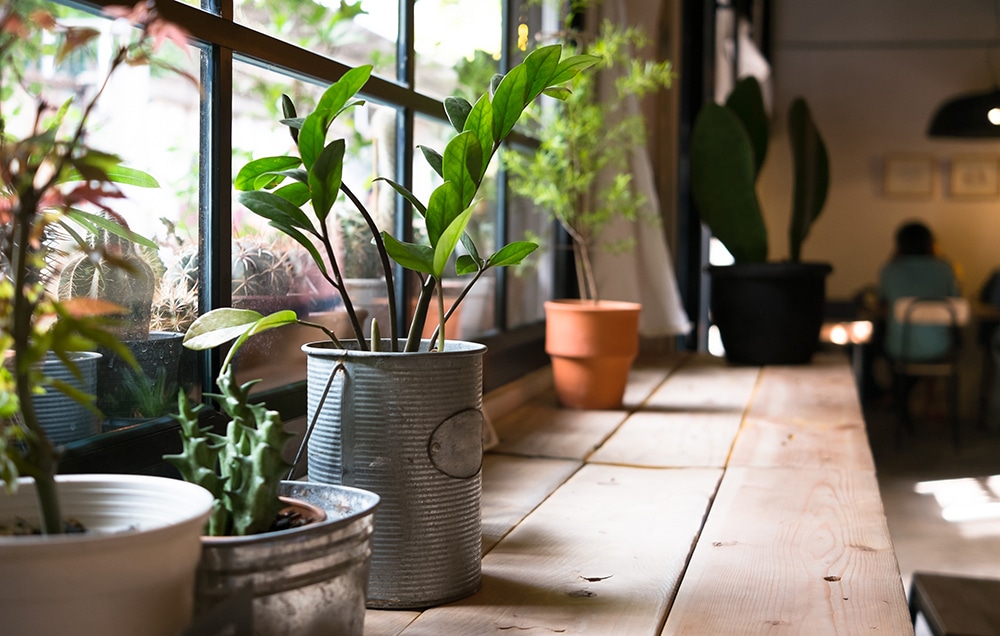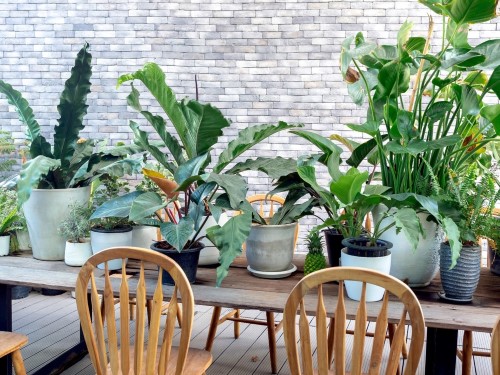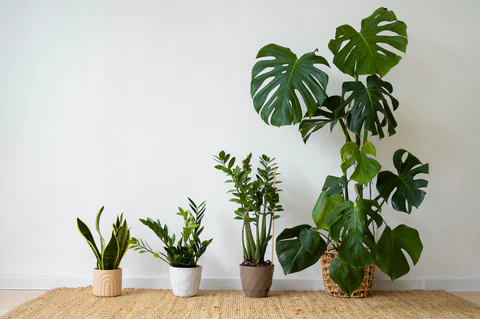Cigarette smoke is one of the most harmful indoor pollutants, loaded with toxins like formaldehyde, benzene, carbon monoxide, and ammonia. Over time, these pollutants can settle on walls, furniture, and even the lungs of everyone in the home. While quitting smoking is the ultimate solution, one way to improve air quality is by introducing air-purifying indoor plants. These green heroes not only remove toxins but also bring beauty, oxygen, and life to your indoor space.
In this article, we’ll explore the best air-cleaning plants specifically suited for smokers’ homes, how they work, tips for plant care in smoke-exposed environments, and where to place them for maximum purification.
Why Use Air-Purifying Plants in a Smoker’s Home?

According to NASA’s Clean Air Study, some houseplants can effectively remove harmful toxins from the air, including the chemicals found in cigarette smoke. They do this through a process known as phytoremediation, where plants absorb pollutants through their leaves and roots, breaking them down or storing them safely.
Benefits of indoor plants in smokers’ homes:
- Remove toxic gases and volatile organic compounds (VOCs)
- Improve oxygen levels and humidity
- Absorb odors and neutralize lingering smoke smells
- Reduce dust and airborne particles
- Create a calming, green space that encourages wellness
Top 10 Air-Cleaning Plants for Homes with Cigarette Smoke

Here are the best low-maintenance, toxin-removing plants backed by science and ideal for indoor use:
1. Peace Lily (Spathiphyllum)
Top Toxins Removed: Benzene, formaldehyde, carbon monoxide, acetone
The Peace Lily is a beautiful flowering plant known for its air-purifying prowess. It thrives in low to moderate light and adds elegance to bedrooms or living areas.
Benefits for Smokers’ Homes:
- Filters VOCs from smoke and household cleaners
- Absorbs moisture and mold spores
- Emits oxygen during the day
Care Tips: Keep the soil moist and place away from direct sunlight. It’s mildly toxic to pets, so keep out of reach.
2. Areca Palm (Dypsis lutescens)
Top Toxins Removed: Carbon monoxide, benzene, formaldehyde
A lush and tropical plant that doubles as a natural humidifier, the Areca Palm is perfect for balancing dry, smoke-affected air.
Benefits:
- Increases humidity
- Removes cigarette-related pollutants
- Enhances energy flow in Feng Shui
Care Tips: Requires bright, indirect light and regular watering.
3. Spider Plant (Chlorophytum comosum)
Top Toxins Removed: Carbon monoxide, formaldehyde, benzene
This hardy plant is perfect for beginners. With its striped, arching leaves, the Spider Plant is not just decorative—it’s a powerful air scrubber.
Benefits:
- Works well in bedrooms and kitchens
- Non-toxic to pets
- Grows baby plants that can be replanted
Care Tips: Tolerates low light; water when soil feels dry.
4. Snake Plant (Sansevieria trifasciata)

Top Toxins Removed: Benzene, formaldehyde, nitrogen oxide
Also known as Mother-in-Law’s Tongue, the Snake Plant is one of the best plants for night-time oxygen release—ideal for bedrooms in smoker’s homes.
Benefits:
- Extremely low maintenance
- Works well in any light condition
- Removes smoke toxins efficiently
Care Tips: Water sparingly; prefers dry soil.
5. Rubber Plant (Ficus elastica)
Top Toxins Removed: Formaldehyde
The Rubber Plant is a bold, beautiful plant with large, glossy leaves that absorb toxic particles from the air, making it a fantastic choice for living rooms.
Benefits:
- Excellent at filtering formaldehyde
- Adds aesthetic value and shade
- Durable and adaptable to smoke-heavy environments
Care Tips: Needs medium to bright light and consistent moisture.
6. Boston Fern (Nephrolepis exaltata)

Top Toxins Removed: Formaldehyde, xylene
Boston Ferns thrive in humid conditions and act as natural air moisturizers. They’re great for bathrooms, kitchens, and smoke-heavy areas.
Benefits:
- Absorbs airborne toxins and adds moisture
- Great for allergy-prone residents
- Classic hanging plant look
Care Tips: Needs humidity and indirect light; mist regularly.
7. Aloe Vera
Top Toxins Removed: Formaldehyde, benzene
A multipurpose plant with medicinal properties, Aloe Vera also purifies air and helps heal skin irritation—especially useful for smokers with dry or damaged skin.
Benefits:
- Absorbs toxins while releasing oxygen
- Needs very little care
- Works well on windowsills or side tables
Care Tips: Needs bright light; water sparingly.
8. English Ivy (Hedera helix)

Top Toxins Removed: Benzene, carbon monoxide, formaldehyde
English Ivy is a fast-growing climber known for its toxin-absorbing capabilities, especially mold and tobacco-related chemicals.
Benefits:
- Removes smoke-related allergens
- Ideal for hanging baskets
- Can cover unattractive smoke-stained walls
Care Tips: Bright, indirect light; keep soil slightly moist.
9. Pothos (Epipremnum aureum)
Top Toxins Removed: Formaldehyde, carbon monoxide, xylene
Also called Devil’s Ivy, Pothos is one of the easiest and most resilient indoor plants. It’s especially effective at cleaning smoke-heavy air.
Benefits:
- Absorbs indoor toxins
- Tolerates low light
- Grows in hanging baskets or vertical walls
Care Tips: Allow soil to dry between waterings.
10. Dracaena (Dracaena fragrans and varieties)
Top Toxins Removed: Benzene, formaldehyde, trichloroethylene
Dracaenas come in many beautiful forms and colors, all with strong air-purifying abilities, perfect for homes affected by indoor smoke.
Benefits:
- Filters multiple indoor toxins
- Adds vibrant color and height
- Works well in living rooms and hallways
Care Tips: Medium light; do not overwater.
How to Use Plants Effectively in Smoke-Affected Homes
Placing air-purifying plants around your home is the first step—but proper use and arrangement will maximize their effectiveness.
Placement Tips:
- Place plants near ashtrays or smoking zones to trap smoke particles.
- Use multiple small plants rather than one large one for even distribution.
- Keep a plant on bedside tables to improve overnight oxygen levels.
- Rotate plant positions every few weeks to allow for even exposure to light.
Additional Tips to Improve Indoor Air Quality
While plants help clean the air, combine them with other strategies for best results:
- Ventilate regularly: Open windows for fresh air circulation.
- Use air purifiers: HEPA filters remove finer smoke particles.
- Clean surfaces weekly: Smoke residue settles on furniture and walls.
- Use natural candles or diffusers: Avoid synthetic sprays or room fresheners.
Plant Care in Smoky Environments
Indoor smoke exposure can coat leaves with a layer of toxins, reducing the plant’s ability to breathe and photosynthesize.
Special Care for Smokers’ Homes:
- Wipe leaves weekly with a damp cloth to remove residue.
- Mist plants regularly to remove smoke particles and improve humidity.
- Repot yearly to refresh soil, especially if ash has settled into the pot.
- Avoid smoking near sensitive plants like ferns or flowering varieties.
Emotional and Wellness Benefits
Beyond air purification, indoor plants in smokers’ homes also provide mental health benefits:
- Reduce stress and anxiety
- Promote mindfulness and calm
- Offer a sense of responsibility and care
- Encourage quitting by creating a health-focused atmosphere
A greener home can often inspire a healthier lifestyle, one plant at a time.
Conclusion
Living in a smoker’s home doesn’t mean you must settle for poor air quality. With the right mix of air-cleaning indoor plants, you can turn your home into a fresh, breathable, and vibrant space. From low-maintenance varieties like Snake Plant and Pothos to high-humidity lovers like Boston Fern and Peace Lily, there’s a plant for every room and lifestyle.






Leave A Comment